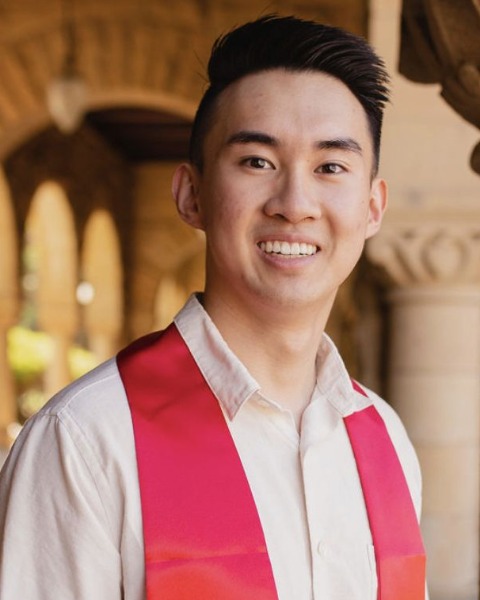Health Equity/Social Determinants of Health
Category: Abstract Submission
Health Equity/Social Determinants of Health IV
155 - Diapers or Rent? Exploring Tradeoffs Made to Mitigate Diaper Insecurity
Monday, April 25, 2022
3:30 PM - 6:00 PM US MT
Poster Number: 155
Publication Number: 155.411
Publication Number: 155.411
Max Lee, Stanford University School of Medicine, Stanford, CA, United States; Shada S. Sinclair, Stanford University School of Medicine, Stanford, CA, United States; Janine Bruce, Stanford University School of Medicine, Stanford, CA, United States; Nicola Gerbino, Stanford University School of Medicine, San Francisco, CA, United States; Vanessa Baker-Simon, Stanford University School of Medicine, Belmont, CA, United States; Elena Vinton, Scripps College, Palo Alto, CA, United States; Samhita Kadiyala, Scripps College, Washington, DC, United States; Gabriela V. Escobar, Stanford University School of Medicine, San Jose, CA, United States; Baraka D. Floyd, Stanford University School of Medicine, Stanford, CA, United States

Max Lee, MA
Program Coordinator
Stanford University School of Medicine
Canfield, Ohio, United States
Presenting Author(s)
Background: Diapers are crucial and costly but are not covered by federal aid programs like SNAP or WIC. A needs-assessment at a suburban federally qualified health center (FQHC) in the Bay Area found that 50% of patients faced diaper insecurity - having insufficient diapers to meet their child’s needs. Cost was cited as the major barrier, with few diaper banks available to address this need.
Objective: To understand the tradeoffs made by caregivers to mitigate diaper insecurity using a mixed-methods research design.
Design/Methods: Patients of diaper-wearing age at a suburban FQHC were eligible to receive free diapers from Diapers at the Doctor, a clinic-based diaper distribution program started in September 2020. Caregivers completed enrollment and follow-up (>3 months) surveys (English/Spanish) of experiences with diaper insecurity and tradeoffs made to mitigate it. Descriptive statistics and Chi-square tests were performed in STATA 15.1. A stratified subsample of caregivers were interviewed in person or by phone (English/Spanish) based on duration of program participation (>3 months), and team-based coding and theme analysis were conducted.
Results: Survey participants (n=132) were Hispanic (86%), White (10%), Native Hawaiian (2%), Black (1%), Asian (1%). Households were mostly two-parent led (77%) with a median of 2.56 children, and most reported being unemployed (80%). At enrollment, participants were most likely to borrow diapers (47%) or change diapers less often (33%) when experiencing diaper insecurity. At follow-up they were still most likely to make these two tradeoffs, but did so at significantly lower rates: 16% and 17%, respectively (Table 1). Participants who mitigated diaper insecurity by changing diapers less often (n=24) reported significantly more diaper related health problems than those who responded in other ways (rarely/never; 71%) (Table 2). At follow-up, caregivers noted that receiving diapers helped reduce their stress (56%), make their child happier (31%), and save money (39%). Qualitative interviews revealed that caregivers compromised on their personal needs to prioritize diapers. Managing diaper insecurity by changing diapers less often was common, sometimes leading to discomfort and diaper rashes in children. Conclusion(s): A clinic-based diaper distribution program alleviated the need to make some tradeoffs to mitigate diaper insecurity. Future research should explore the impact of clinic-based diaper programs on and diaper related health outcomes and policy interventions to improve access to affordable diapers.
Table 1. Survey Responses to “What do you do when you do not have enough diapers?” at Enrollment and Follow-up *Significant at a p-value of < 0.05
*Significant at a p-value of < 0.05
Table 2. Self-Reported Diaper Related Health Problems (n=132).jpg) *Significant at a p-value of < 0.05
*Significant at a p-value of < 0.05
Objective: To understand the tradeoffs made by caregivers to mitigate diaper insecurity using a mixed-methods research design.
Design/Methods: Patients of diaper-wearing age at a suburban FQHC were eligible to receive free diapers from Diapers at the Doctor, a clinic-based diaper distribution program started in September 2020. Caregivers completed enrollment and follow-up (>3 months) surveys (English/Spanish) of experiences with diaper insecurity and tradeoffs made to mitigate it. Descriptive statistics and Chi-square tests were performed in STATA 15.1. A stratified subsample of caregivers were interviewed in person or by phone (English/Spanish) based on duration of program participation (>3 months), and team-based coding and theme analysis were conducted.
Results: Survey participants (n=132) were Hispanic (86%), White (10%), Native Hawaiian (2%), Black (1%), Asian (1%). Households were mostly two-parent led (77%) with a median of 2.56 children, and most reported being unemployed (80%). At enrollment, participants were most likely to borrow diapers (47%) or change diapers less often (33%) when experiencing diaper insecurity. At follow-up they were still most likely to make these two tradeoffs, but did so at significantly lower rates: 16% and 17%, respectively (Table 1). Participants who mitigated diaper insecurity by changing diapers less often (n=24) reported significantly more diaper related health problems than those who responded in other ways (rarely/never; 71%) (Table 2). At follow-up, caregivers noted that receiving diapers helped reduce their stress (56%), make their child happier (31%), and save money (39%). Qualitative interviews revealed that caregivers compromised on their personal needs to prioritize diapers. Managing diaper insecurity by changing diapers less often was common, sometimes leading to discomfort and diaper rashes in children. Conclusion(s): A clinic-based diaper distribution program alleviated the need to make some tradeoffs to mitigate diaper insecurity. Future research should explore the impact of clinic-based diaper programs on and diaper related health outcomes and policy interventions to improve access to affordable diapers.
Table 1. Survey Responses to “What do you do when you do not have enough diapers?” at Enrollment and Follow-up
 *Significant at a p-value of < 0.05
*Significant at a p-value of < 0.05Table 2. Self-Reported Diaper Related Health Problems (n=132)
.jpg) *Significant at a p-value of < 0.05
*Significant at a p-value of < 0.05